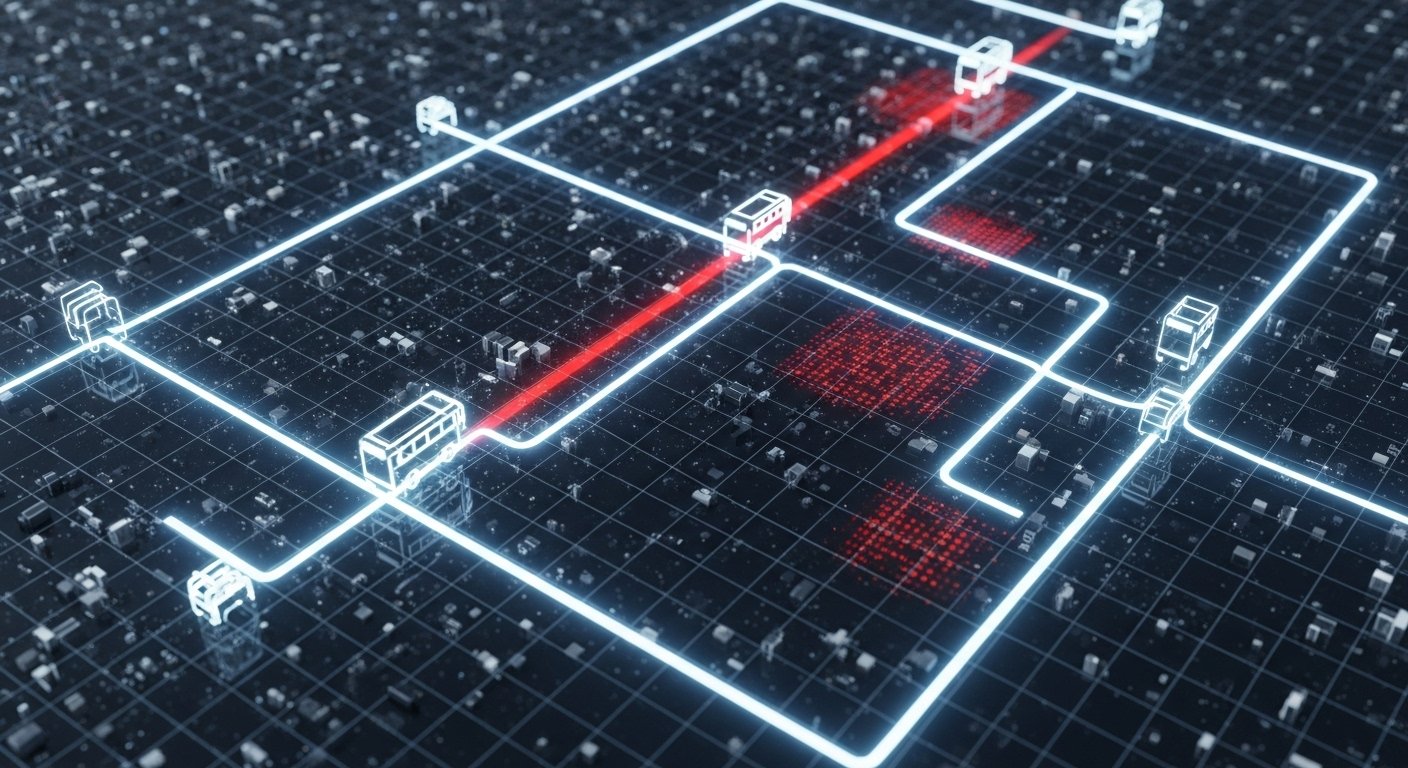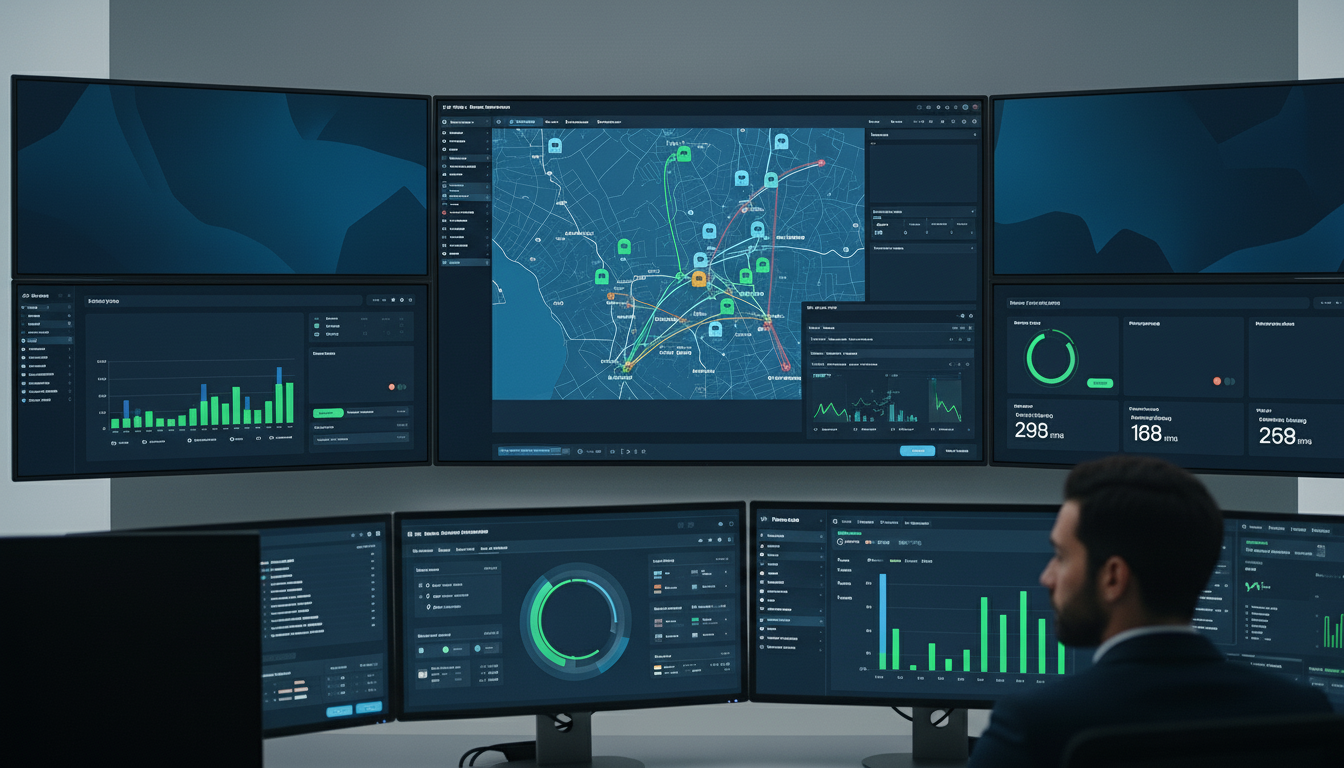Système de placement global (GPS) la technologie a fondamentalement changé la façon dont nous naviguons et communiquons avec le monde qui nous entoure. Initialement développé à des fins militaires pendant la bataille froide, La technologie GPS a depuis pénétré divers aspects de la vie quotidienne, de la navigation individuelle à la gestion logistique complexe. En son coeur, La technologie GPS dépend d'un réseau de satellites en orbite autour de la planète, qui transmettent des indications qui permettent à un récepteur GPS de déterminer sa position exacte grâce à une procédure connue sous le nom de triangulation par satellite. Cela implique de mesurer la distance entre le récepteur et au moins 4 satellites pour identifier sa position précise.
Le développement de la technologie GPS a été incroyable. Les tout premiers appareils GPS, qui étaient encombrants et limités en fonctionnalités, ont ouvert la voie aux petits, des systèmes très avancés qui alimentent tout, des téléphones mobiles au système GPS Protrack365 utilisé dans la gestion avancée de flotte automobile. Les systèmes modernes de protection des véhicules intègrent souvent des fonctionnalités GPS avancées.. Cette progression s'explique par des améliorations considérables de la technologie des satellites., indiquer les formules de traitement, et le niveau de sensibilité du récepteur, qui ont amélioré conjointement la précision et la fiabilité des informations GPS.
Systèmes GPS modernes, comme le tracker GPS Protrack, offrent une précision inégalée, souvent à quelques mètres, et peut fournir des informations de lieu en temps réel. Ces systèmes jouent un rôle crucial dans la prévention des cambriolages de véhicules et constituent un élément clé des technologies d'immobilisation des systèmes d'alarme de voiture modernes.. Malgré ces évolutions, La technologie GPS a ses limites, en particulier dans les atmosphères où les indications satellite peuvent être obstruées, comme les canyons métropolitains ou les forêts épaisses. En outre, des facteurs tels que des problèmes atmosphériques et indiquent des trajets multiples peuvent présenter des erreurs. Cependant, développements en cours, consistant en l'intégration de diverses autres constellations de satellites et de méthodes avancées de correction d'erreurs, procéder pour réduire ces défis, Le GPS de production est un appareil essentiel dans des secteurs allant de la navigation individuelle aux applications professionnelles GPS., et améliorer l'efficacité des solutions durables pour les systèmes anti-effraction.
Alors que la technologie de conduite autonome continue de créer, le rôle des systèmes GPS devient de plus en plus critique. En fournissant des informations de lieu précises et fiables, des systèmes comme le système GPS Protrack365 sont essentiels pour la navigation, planification du chemin, et garantir la sécurité et l’efficacité des véhicules autonomes. L'interaction entre la technologie GPS et la conduite autonome représente un progrès considérable dans le domaine des transports., promettant un plus grand bénéfice, gestion améliorée du trafic, et une sécurité améliorée lors de la conduite, tout en renforçant les fonctionnalités avancées d'immobilisation du système d'alarme de voiture.
GPS dans les véhicules autonomes: Comment ça marche
Dans le monde de la conduite autonome, l'intégration de la technologie GPS est essentielle. Contrairement aux véhicules traditionnels, les véhicules autonomes dépendent grandement d'un réseau avancé d'unités et de systèmes de détection pour parcourir et faire des choix en temps réel. Le système GPS Protrack365, pour les circonstances, est un fondement de cet Internet complexe des technologies, fournir des informations essentielles pour la planification du chemin, navigation en temps réel, et précision de placement. Ces systèmes avancés de protection des véhicules sont cruciaux pour l’intégrité fonctionnelle.
Au cœur du système de navigation d’un véhicule autonome se trouve le récepteur GPS., qui interagit avec les satellites pour déterminer la position précise du véhicule. Ces informations sont ensuite fusionnées avec les informations provenant de diverses autres unités de détection telles que le LIDAR., radar, et caméras vidéo. LIDAR (Lumière Découverte et Variation) utilise des impulsions laser pour produire des cartes 3D détaillées de l’environnement du véhicule, tandis que le radar repère les objets et mesure leur vitesse et leur portée. Les caméras vidéo fournissent des informations esthétiques, aider à déterminer les indications routières, marquage des voies, et les défis.
Le tracker GPS Protrack fonctionne comme un élément important de ce système intégré, s'assurer que le véhicule conserve un placement précis à perpétuité. Pour les véhicules autonomes, la précision est primordiale; de petits écarts peuvent également entraîner des erreurs de navigation considérables. C'est là que les systèmes GPS de haute précision, comme la cinématique en temps réel (RTK) et placement précis des points (PPP), entrer en jeu. Ces systèmes avancés améliorent la précision du GPS au centimètre près, ce qui est crucial pour des tâches telles que le maintien de la voie et l'évitement des défis, et renforcer les fonctions d'immobilisation du système d'alarme de voiture.
En plus de fournir des informations précises sur le lieu, Les systèmes GPS contribuent à la planification des itinéraires en évaluant les informations sur le trafic en temps réel et en recommandant les parcours idéaux.. Cette capacité est particulièrement bénéfique pour la gestion de flotte automobile dans le secteur des GPS., où l'efficacité et la fiabilité sont essentielles. En tirant parti du système GPS Protrack365, les superviseurs de flotte peuvent surveiller l'emplacement des véhicules, optimiser les itinéraires, et garantir que les véhicules autonomes fonctionnent efficacement et en toute sécurité, contribuant davantage à la solution des performances du système anti-effraction.
Finalement, l'intégration fluide du GPS avec diverses autres technologies sensorielles permet aux véhicules autonomes d'acquérir une compréhension approfondie de leur environnement. Cette approche alternative améliore non seulement la précision de la navigation et du placement, mais garantit également que ces véhicules peuvent fonctionner de manière fiable dans des problèmes de conduite variés.. À mesure que la technologie GPS se développe, son rôle dans la conduite autonome va certainement s'étendre, ouvrir la voie à des systèmes d’autonomie avancés et efficaces et à des systèmes de protection des véhicules améliorés.
Défis et restrictions du GPS dans la conduite autonome
L'intégration des systèmes GPS, comme le système GPS Protrack365, la technologie de conduite autonome présente une série de défis et de restrictions qui doivent être soigneusement traités. Un défi considérable est d'indiquer les blocages et les perturbations. Ambiances métropolitaines, souvent appelés « canyons urbains »,’ positionner représente un défi considérable en raison des structures élevées qui peuvent refléter ou obstruer les indications GPS.. De la même manière, les passages et les endroits très boisés présentent des situations où les indications GPS sont complètement perdues, déclencher des imprécisions de navigation. De telles susceptibilités soulignent la nécessité de systèmes d'immobilisation durables pour les systèmes d'alarme de voiture..
La météo peut également avoir un impact sur la précision des systèmes GPS. Des facteurs tels que de fortes précipitations, neige, ou un brouillard épais peut se détériorer, ce qui indique la qualité, mettant en évidence les incohérences potentielles dans le placement des informations. Cette variabilité nécessite la nécessité de solutions améliorées pour garantir des procédures fiables quels que soient les problèmes météorologiques.. En outre, Le GPS indique que l'usurpation d'identité et le brouillage restent des problèmes critiques. L'usurpation d'identité implique la diffusion nuisible d'indications GPS incorrectes, ce qui peut tromper le système de navigation d’un véhicule autonome. Brouillage, d'autre part, implique la transmission d'indications qui bloquent les régularités GPS légitimes, déclenchant une perte d'intégrité d'indication, production solution efficace conceptions de systèmes anti-effraction beaucoup plus critiques.
Pour réduire ces susceptibilités, la redondance des systèmes de navigation est cruciale. Technologies correspondantes comme les systèmes de navigation inertielle (INS) et l'odométrie esthétique sont progressivement intégrées pour prendre en charge les informations GPS. INS, qui dépend des unités de détection de mouvement pour suivre les changements de position, fournit des informations de navigation continues pendant les pannes temporaires du GPS. L'odométrie esthétique utilise les informations d'une caméra vidéo pour estimer le mouvement du véhicule dans son environnement., renforçant davantage la fiabilité du système de navigation et des systèmes de protection des véhicules.
Les recherches et développements en cours se concentrent sur l'amélioration de la fiabilité et de la précision des systèmes GPS pour les véhicules autonomes.. Les initiatives consistent en le développement de récepteurs multifréquences et multiconstellations, qui utilise les indications de plusieurs systèmes satellites pour améliorer la précision et la durabilité. De plus, des formules d'intelligence artificielle sont utilisées pour anticiper et corriger les erreurs potentielles en temps réel. Ces développements visent à produire une structure de navigation durable, s'assurer que les systèmes GPS, comme le tracker GPS Protrack, peut répondre efficacement aux exigences de conduite autonome et de gestion de flotte automobile dans un environnement commercial GPS, et fournit des fonctionnalités avancées d'immobilisation du système d'alarme de voiture.
L'avenir du GPS et de la conduite autonome
L’avenir de la technologie GPS dans le monde de la conduite autonome est extrêmement prometteur, propriété de développements continus et de développements techniques. Parmi les développements les plus considérables à l’horizon figurent les satellites GPS de nouvelle génération.. Ces satellites avancés sont conçus pour fournir une plus grande précision, amélioration de l'endurance indiquée, et durabilité améliorée contre les perturbations et le brouillage. Ce développement est crucial pour la navigation précise requise par les véhicules autonomes, avec des technologies avancées d'immobilisation du système d'alarme de voiture.
Développements en cinématique temps réel (RTK) les placements sont également prêts à transformer le paysage GPS. La technologie RTK améliore la précision du GPS standard en utilisant des indications supplémentaires provenant des terminaux de base, réduisant ainsi les erreurs à de simples centimètres. Ce degré de précision est essentiel pour le fonctionnement sûr et efficace des voitures autonomes., en particulier dans les atmosphères métropolitaines où le placement précis des voies et la découverte des défis sont essentiels, et améliore considérablement les systèmes de protection des véhicules.
L'intégration du GPS avec divers autres systèmes mondiaux de navigation par satellite (GNSS) comme GLONASS, Galilée, et BeiDou est un modèle de plus qui façonne l'avenir. En combinant les informations de plusieurs constellations GNSS, les véhicules autonomes peuvent également accomplir une plus grande précision et fiabilité dans le placement. Cette approche multi-GNSS atténue les dangers associés aux blocages ou aux perturbations atmosphériques., assurer des capacités de navigation continues et renforcer la sécurité du système anti-effraction de solution efficace.
Regarder à l'avance, les améliorations continues de la technologie GPS auront très probablement des impacts considérables sur le développement et la mise en œuvre de véhicules autonomes. La précision et la fiabilité améliorées du GPS prendront en charge des formules de conduite autonome plus avancées., permettant aux véhicules de parcourir plus facilement des atmosphères complexes. En outre, ces évolutions pourraient inciter les organismes de réglementation à améliorer les exigences et les normes afin de garantir l'intégration sûre des véhicules autonomes dans les installations de transport actuelles..
Au-delà des aspects technologiques, les ramifications plus larges de ces évolutions pour l’industrie des transports et la culture sont considérables. Des systèmes GPS plus précis et plus fiables faciliteront la promotion à grande échelle des véhicules autonomes, important pour les réductions potentielles des embouteillages, accidents, et émissions. De plus, l'efficacité acquise dans la gestion de flotte automobile et les applications commerciales GPS pourrait changer la logistique et les transports en commun, à terme, contribuant ainsi à une communauté de mouvement métropolitaine plus intelligente et plus durable, tout en intégrant des systèmes avancés de protection des véhicules.




